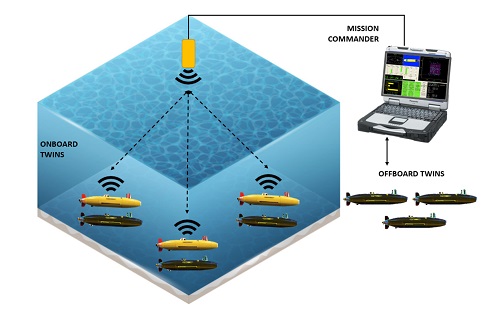Digital Twinning used in sea trials with the US Defence Advanced Research Projects Agency (DARPA).
Integer, along with its subcontractors at the Woods Hole Oceanographic Institution (WHOI) and Rite-Solutions, has been investigating the implementation of digital twins for unmanned underwater vehicle (UUV) missions. The team integrated the digital twin architecture, software and communication systems on a REMUS 100 vehicle, which was validated during at-sea tests.
Observing and communicating with undersea vehicles is challenging and thus forecasting what might happen on missions is very important, but also very difficult to do with any accuracy, according to Integer Technologies’ Chief Operating Officer, Dr Josh Knight.
“We are developing digital twins of all size classes of UUVs to overcome the sparsity of data, simulate missions and adapt the mission plan before something goes wrong,” he says.
The project aims to define and demonstrate digital twin use cases for individual UUVs as well as multi-UUV missions with the goal of helping operators overcome undersea communication challenges and UUV mission interruptions. The developed “operational” digital twins are digital models of a physical thing, a process, or a system that also use historical mission data logs, sensor data and faster-than-real-time simulations “at the edge” to enable operational decisions, leading to better mission outcomes.
The research program includes developing and performing in-water testing on a split onboard/offboard digital twin prototype architecture. This architecture enables the prediction of mission success likelihood and provides alternative achievable missions in real time to the operational commander based on environmental and UUV subsystem past, present, and forecasted states.
Although providing a mission commander with real time mission performance data from undersea assets remains challenging, Integer’s digital twin architecture holds the potential to drastically reduce communications bandwidth requirements and increase the accuracy of system health and mission performance data displayed to the operator.
- UK manufacturing steps up to COVID-19 crisis - April 2, 2020
- Clustering Innovation - March 12, 2020
- A Global Monitor - March 6, 2020

